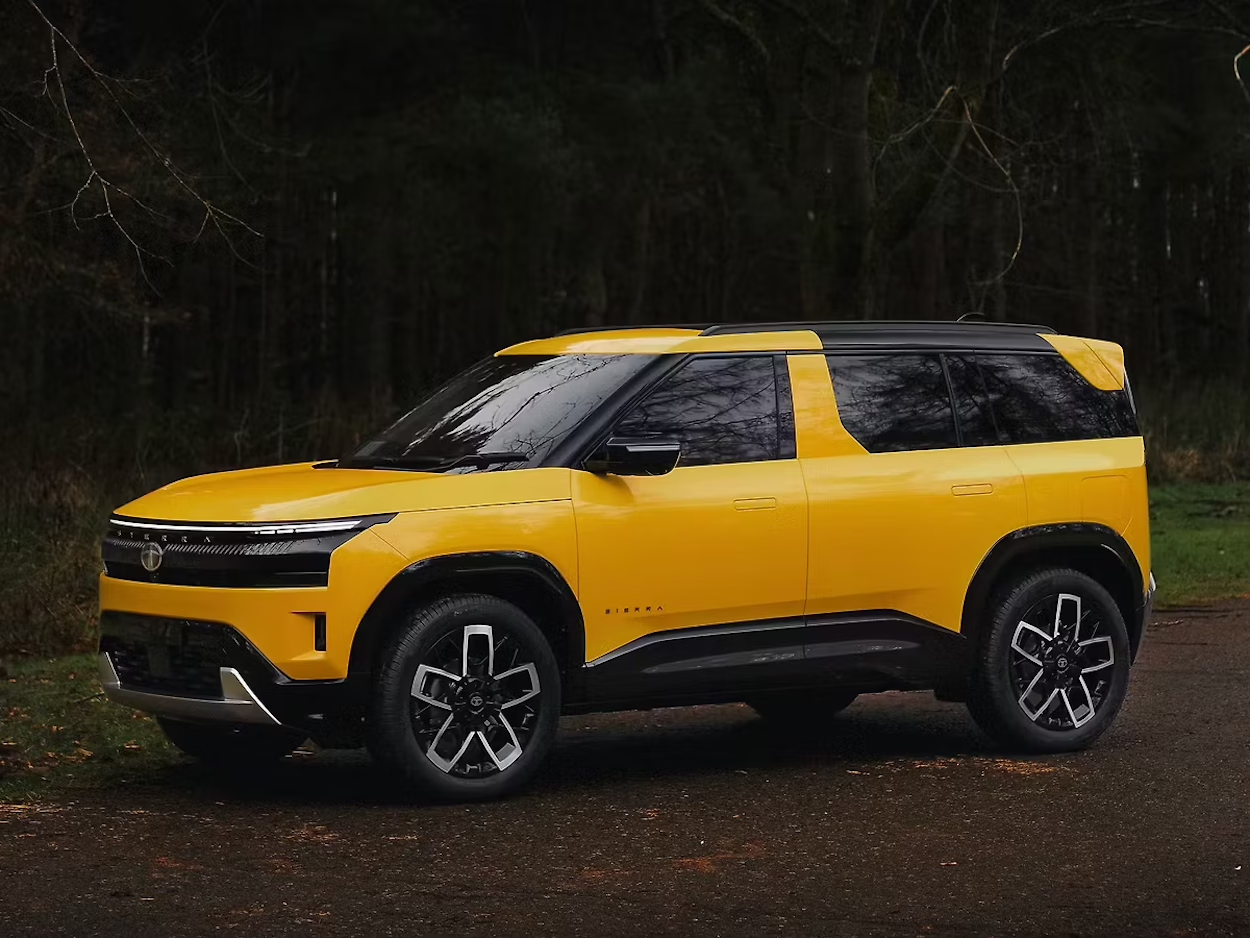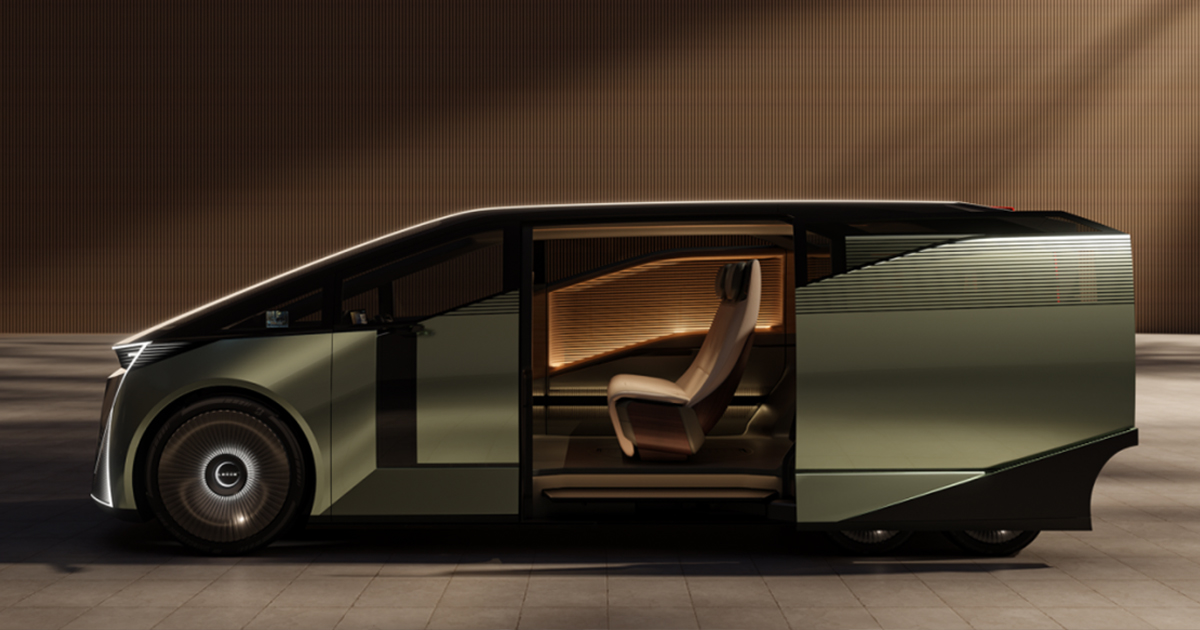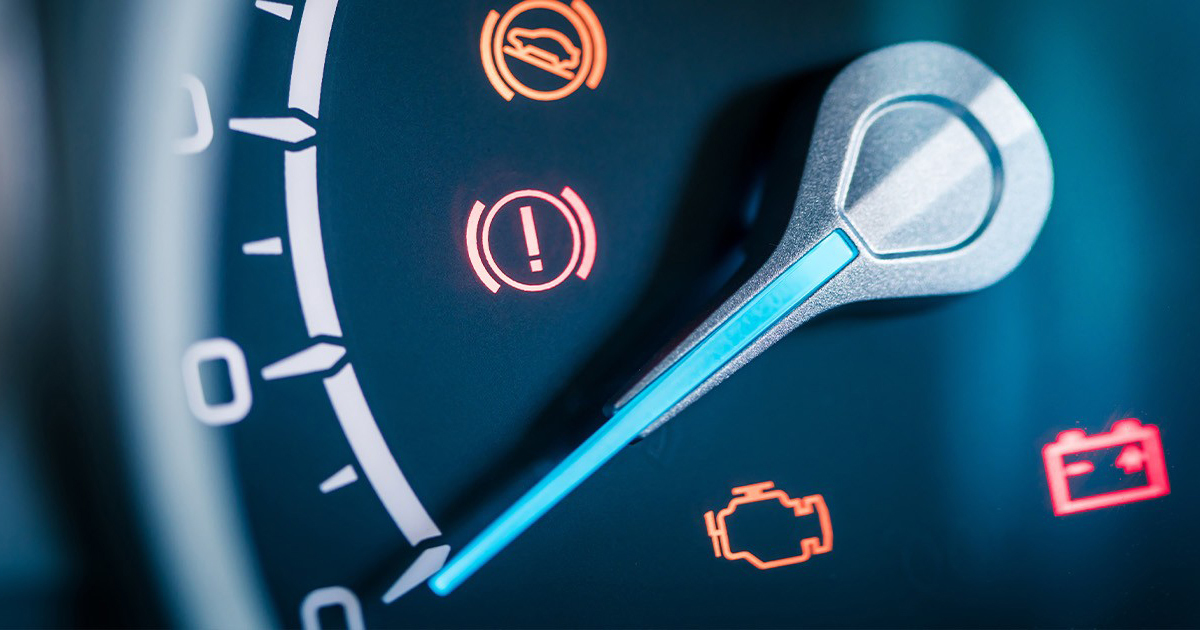The automotive industry in 2025 is undergoing a revolutionary transformation driven by rapid technological advancements. From self-parking systems to AI-powered voice assistants, cars today are no longer just modes of transport—they’re smart mobility solutions designed for safety, sustainability, and seamless connectivity. As environmental regulations tighten and consumer preferences shift toward smarter and greener travel, automotive technology has become more than a luxury—it’s a necessity.
For modern-day drivers, staying updated with the latest car tech isn’t just about convenience. It directly impacts fuel efficiency, driving safety, ease of navigation, and overall road experience. Whether you’re a city commuter battling traffic or a long-distance traveler, having the right tech upgrades in your vehicle can significantly enhance your driving lifestyle.
This article is crafted for drivers and car buyers who want to future-proof their rides. We explore five must-have tech upgrades in 2025 that are redefining what it means to drive smart. These upgrades not only improve vehicle performance but also boost safety, comfort, and control.
From Advanced Driver Assistance Systems (ADAS) to AI-based infotainment, we’ll walk you through the top innovations, complete with real-world examples of 2025 cars that come equipped with these features. Get ready to discover the technologies that are setting new benchmarks in the automotive world.
Top 5 Must-Have Tech Automotive Upgrades in 2025
Here are the best 5 must-have tech automotive upgrades that your car should have in 2025. Look out for these features before you buy a new car and have the best and advanced driving experience this year.
- Advanced Driver Assistance Systems (ADAS)
- 360-Degree Camera with Parking Assist
- AI-Enabled Infotainment & Voice Command Systems
- Digital Instrument Clusters & HUD (Heads-Up Display)
- Vehicle Telematics & App-Based Controls
5 Must-Have Tech Automotive Upgrades: Detailed Information
Let us explore the above listed 5 must-have tech automotive upgrades with the car you can find the tech upgrade. The following section will also detail the benefits, performance impact and real-world impact of these technological advancements in next-gen vehicles.
1. Advanced Driver Assistance Systems (ADAS)
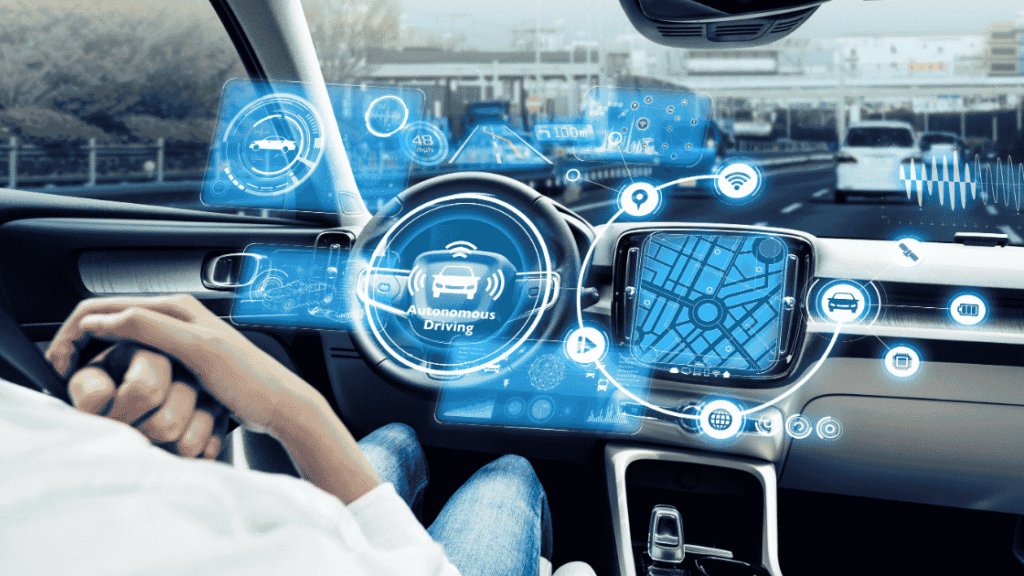
What It Is:
ADAS refers to a suite of safety features that automate and enhance key aspects of driving. These include adaptive cruise control, lane keep assist, automatic emergency braking (AEB), blind spot detection, and traffic sign recognition.
How It Works:
ADAS uses sensors, cameras, radar, and artificial intelligence to monitor the vehicle’s surroundings. For instance, adaptive cruise control adjusts your speed based on the vehicle ahead, while AEB automatically applies brakes when it detects an imminent collision. Lane assist nudges the car back if it starts to drift without signaling.
Why It’s a Must-Have in 2025:
With rising road accidents, dense traffic, and stricter safety norms in India and globally, ADAS is becoming standard in premium and mid-segment cars. In 2025, many models now offer Level 2 ADAS, which combines multiple features for semi-autonomous driving.
Car Example: Hyundai Tucson 2025
The 2025 Hyundai Tucson is one of the most advanced SUVs in India featuring Level 2 ADAS. It includes lane following assist, forward collision warning, and adaptive cruise control with stop-and-go function.
Benefits:
- Reduces human error and fatigue
- Enhances highway and city driving safety
- Great for senior citizens and novice drivers
- Minimizes chances of fender benders and high-speed crashes
Real-World Impact:
In real-world driving, ADAS can prevent head-on collisions, keep the vehicle centered in traffic, and ensure safer braking during emergencies. With traffic congestion becoming a daily challenge, ADAS tech reduces driving stress and boosts confidence behind the wheel.
2. 360-Degree Camera with Parking Assist

What It Is:
A 360-degree camera system stitches together views from multiple cameras around the car to create a bird’s-eye view on the infotainment screen. When paired with parking sensors and auto-park features, it becomes a powerful tool for urban parking.
How It Works:
The system uses four cameras—front, rear, and two side-view mirrors—to project a top-down view. Parking assist uses sensors and software to guide steering or even self-park the vehicle in tight spots.
Why It’s a Must-Have in 2025:
With parking spaces becoming tighter in metro cities and visibility often obstructed by traffic or cluttered roads, this feature is no longer limited to luxury cars. It’s now crucial for avoiding dents, scratches, and curb rash.
Car Example: MG Astor 2025
The MG Astor 2025 is a compact SUV offering an excellent 360-degree camera system with sharp resolution, combined with AI-based parking assistance. It makes parallel and reverse parking seamless even for new drivers.
Benefits:
- Prevents blind-spot-related accidents
- Saves time and reduces anxiety in crowded areas
- Ideal for first-time drivers, compact car users
- Supports tight parking with better spatial awareness
Real-World Effectiveness:
In Indian cities, where scooters zip past parked cars and parking lines are often faded or ignored, this feature becomes a daily lifesaver. It not only protects your vehicle but also improves overall road discipline.
3. AI-Enabled Infotainment & Voice Command Systems
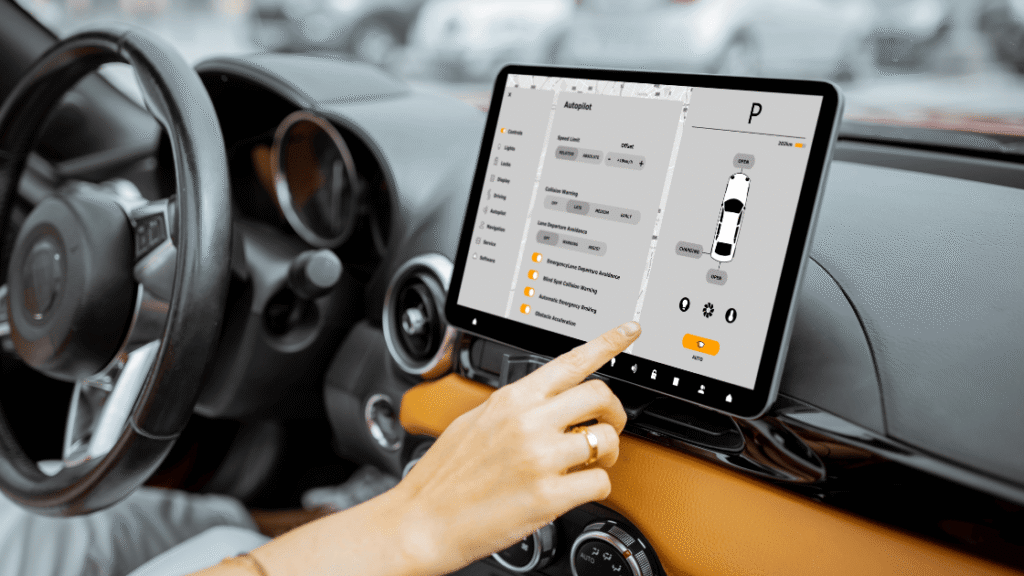
What It Is:
AI-powered infotainment systems offer smart voice assistance, predictive suggestions, and seamless app connectivity. Drivers can operate navigation, music, A/C, calls, and messages without taking their hands off the wheel.
How It Works:
These systems integrate with voice platforms like Google Assistant, Amazon Alexa, or proprietary AI solutions. Natural language processing helps them understand commands like “Take me to the nearest EV charger” or “Play Bollywood hits.”
Why It’s a Must-Have in 2025:
Driver distraction is a major concern in modern vehicles. Touchscreens are growing in size, but physical buttons are disappearing. AI assistants make interaction safer and easier, especially during fast-paced or solo drives.
Car Example: Tata Harrier EV 2025
Tata’s new Harrier EV comes with a revamped infotainment suite, featuring AI-based voice controls, wireless Apple CarPlay/Android Auto, and mood-based interior themes. It’s one of the most intuitive systems in its class.
Benefits:
- Reduces distraction and boosts driver safety
- Allows for hands-free calls, navigation, and car control
- Makes daily commutes more engaging
- Learns user preferences for a personalized experience
Real-World Use:
Whether you’re navigating through traffic or stuck at a long signal, voice commands let you change your route or adjust A/C without losing focus. It enhances both convenience and safety.
You may also like: 5 Top Hybrid Cars for Eco-Conscious Buyers 2025: Best Hybrid Cars Reviewed
4. Digital Instrument Clusters & HUD (Heads-Up Display)
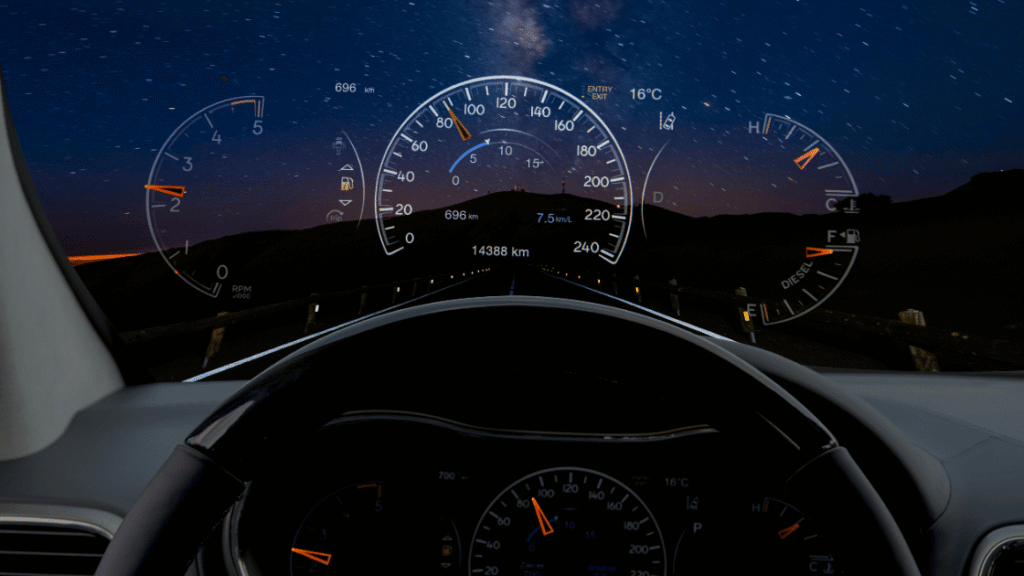
What It Is:
A digital instrument cluster replaces traditional dials with a customizable screen. The Heads-Up Display (HUD) projects key driving data—like speed, directions, and warnings—onto the windshield or a transparent screen in front of the driver.
How It Works:
These systems use TFT/LCD screens that can be customized for layout, color, and displayed info. The HUD reflects information using a projector and special reflective glass, minimizing eye movement.
Why It’s a Must-Have in 2025:In a fast-paced driving environment, keeping your eyes on the road is essential. HUDs reduce distractions, while digital clusters make information easier to interpret and more aesthetically pleasing.
Car Example: Honda Elevate Hybrid 2025
The Honda Elevate Hybrid features a full TFT digital instrument cluster and an optional HUD display. It offers real-time fuel economy, turn-by-turn navigation, and ADAS alerts right in the driver’s line of sight.
Benefits:
- Enhances real-time decision-making
- Reduces the need to glance at central screens
- Improves focus, especially at night or on highways
- Feels modern and gives a premium vibe
Real-World Impact:
Drivers often get distracted while checking speed, maps, or warning lights. A HUD keeps you informed while your eyes stay on the road, making every drive safer and smarter.
5. Vehicle Telematics & App-Based Controls
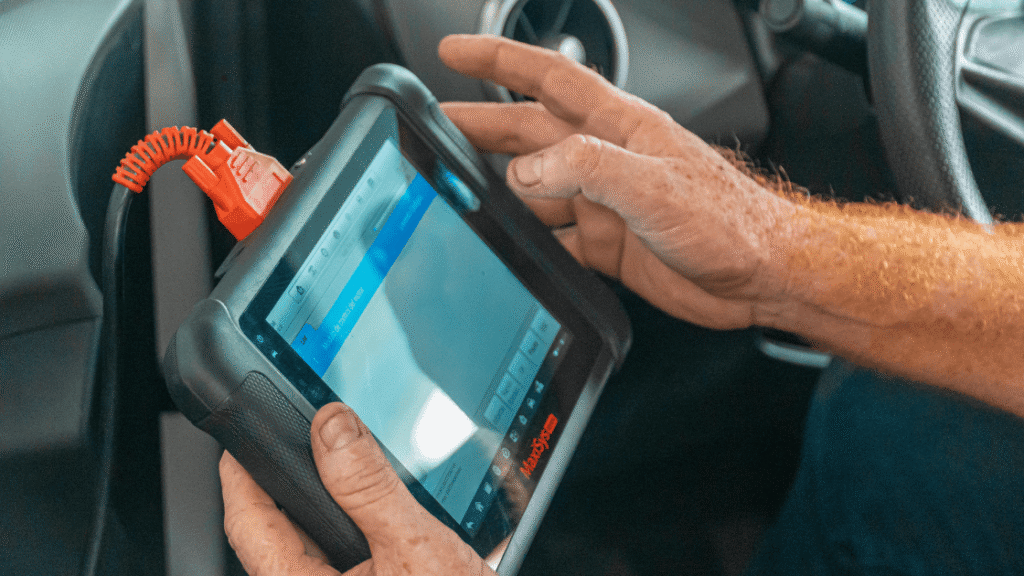
What It Is:
Telematics combines telecom and informatics to allow remote vehicle monitoring, diagnostics, GPS tracking, and app-based commands like locking, climate control, and geo-fencing.
How It Works:
Using embedded SIMs and cloud-based platforms, telematics systems sync your vehicle with a smartphone app. This lets you access real-time data such as engine status, tyre pressure, location, and remote control features.
Why It’s a Must-Have in 2025:
Remote car management is no longer a luxury—it’s a necessity for safety, efficiency, and theft protection. Telematics is now used by individual owners, fleet managers, and ride-hailing services alike.
Car Example: Mahindra XUV700 2025
The Mahindra XUV700 is a front-runner in connected car technology. Its AdrenoX system offers features like remote engine start, location tracking, live vehicle diagnostics, and even smartwatch integration.
Benefits:
- Monitor car health and schedule service proactively
- Lock/unlock and pre-cool your car remotely
- Geo-fence teen drivers or fleet vehicles
- Anti-theft tracking and emergency alerts
Real-World Impact:
Imagine locating your vehicle in a mall parking lot or starting the A/C before stepping into your car on a hot day. Telematics makes such features accessible, practical, and futuristic—right from your phone.
Comparative Table: Tech Upgrades Across 5 Featured Cars
| Car Model | Key Tech Upgrade | How It Helps | Price Segment (₹) |
|---|---|---|---|
| Hyundai Tucson | Level 2 ADAS | Offers adaptive cruise control, lane keep assist, and automatic emergency braking, making highway and urban driving safer and less stressful. Ideal for long commutes and busy traffic conditions. | ₹30–35 lakh |
| MG Astor | 360-Degree Camera + Auto Park Assist | Provides a bird’s-eye view for easy parking in tight spaces and AI-based steering assistance, significantly reducing parking errors and minor collisions. Perfect for congested city environments. | ₹12–16 lakh |
| Tata Harrier EV | AI Voice Commands + Touch UI | Enables hands-free operation of navigation, calls, media, and climate controls through natural language processing, enhancing convenience and minimizing driver distraction. | ₹25–28 lakh (estimated) |
| Honda Elevate Hybrid | Heads-Up Display (HUD) + Digital Instrument Cluster | Projects vital driving info directly in the driver’s line of sight and replaces analog dials with customizable digital displays, improving situational awareness and adding a premium feel. | ₹18–20 lakh |
| Mahindra XUV700 | Vehicle Telematics + Mobile App Control | Allows remote vehicle monitoring, locking/unlocking, pre-conditioning, and real-time diagnostics via smartphone apps, boosting security and convenience for owners. | ₹20–24 lakh |
Why Tech Upgrades Matter in 2025?
The automotive landscape in 2025 is being shaped by intelligent systems, autonomous features, and growing environmental consciousness. Consumers are no longer satisfied with just horsepower and mileage—they now demand smarter, safer, and more connected vehicles. This shift has made automotive tech upgrades one of the most critical considerations for new buyers.
Surge in Smart Vehicle Demand:
With rising urban congestion, drivers are leaning on technology like ADAS, traffic sign recognition, and 360-degree cameras to ease their daily commute. These systems not only reduce stress but also minimize human error—one of the leading causes of road accidents.
Focus on Safety, Emissions & Comfort:
Governments around the world, including India, are promoting technologies that reduce tailpipe emissions and enhance road safety. Features like regenerative braking, lane assist, and emergency braking are fast becoming standard requirements for new vehicles.
Regulatory Push and Incentives:
Countries are offering tax rebates and policy incentives to OEMs and consumers adopting tech-equipped vehicles, especially those supporting clean mobility, hybrid, or electric drivetrains. In India, several states now offer reduced registration charges for cars equipped with safety and green tech.
Competitive Innovation by OEMs:
Brands like Hyundai, Mahindra, Tata, and Toyota are investing heavily in next-gen infotainment, connectivity, and ADAS. With regular OTA (Over-the-Air) updates, some vehicles are now capable of evolving and improving their software long after the sale.
Long-Term Value from In-built & Aftermarket Tech:
Whether built-in or retrofitted, tech upgrades can improve resale value, lower maintenance costs, and enhance the overall usability of your vehicle. From connected car apps to digital dashboards, these technologies make cars smarter, safer, and future-ready.
In short, tech isn’t just an add-on in 2025—it’s at the heart of every meaningful automotive experience.
What to Consider Before Choosing a Tech-Loaded Car?
Understand Your Driving Needs
When choosing a tech-loaded car in 2025, the first step is to evaluate your driving habits. If you primarily drive in urban areas, features like 360-degree cameras, parking assist, and AI-powered voice controls can make daily commuting easier and safer. On the other hand, if you frequently travel on highways or take long trips, advanced driver assistance systems (ADAS) such as adaptive cruise control and lane keep assist offer enhanced safety and comfort during extended drives.
Balance Cost vs. Value
Tech upgrades often come at a premium and are typically found in higher trims or as optional packages. It’s important to assess whether the additional cost aligns with how much you will actually use these features. Consider the long-term benefits of each upgrade and decide if the investment justifies the price difference. Also, check if the vehicle supports over-the-air (OTA) software updates, which allow your car’s tech to stay current without needing to visit a service center.
Prioritize After-Sales Support and Warranty
Advanced electronic systems and sensors require proper maintenance and occasional repairs. Choose brands with a reliable service network and clear warranty policies that cover tech components. Good after-sales support ensures that your vehicle remains functional and your investment protected over time.
Focus on Practical Benefits
Not all tech features are equally useful for every driver. Prioritize the must-have tech automotive upgrades that improve your driving safety, fuel efficiency, or daily convenience. Avoid spending extra on flashy gadgets that don’t fit your lifestyle or add tangible value. By considering your specific needs, budget, and the practical impact of each technology, you can make a well-informed and satisfying choice.
Conclusion: Why These 5 Must-Have Tech Automotive Upgrades Are Essential for Every Driver in 2025?
As automotive technology rapidly evolves, tech upgrades are no longer optional luxuries—they are essential tools shaping the future of driving in 2025. Advanced safety systems, intelligent connectivity, and convenience-driven features help reduce accidents, ease driving stress, and create more enjoyable journeys for everyone on the road. Choosing a tech-forward vehicle means investing in peace of mind, efficiency, and a superior driving experience.
For eco-conscious and safety-minded buyers alike, the five must-have upgrades highlighted here—ADAS, 360-degree cameras, AI-powered infotainment, digital clusters with HUD, and vehicle telematics—offer tangible benefits that justify their cost. These features not only protect you and your loved ones but also add long-term value to your car by keeping it competitive in a technology-driven market.
To make the most informed choice, test drive vehicles equipped with these upgrades and experience their real-world impact. Stay updated on government incentives or subsidies that may be available to encourage adoption of advanced safety and green tech. Compare different trims carefully, as tech offerings can vary widely between models.
Ultimately, your next car should be more than just transportation—it should be a smart, connected machine that adapts to your lifestyle and future needs. Stay informed, choose smarter, and embrace automotive innovation with confidence. Make your 2025 vehicle purchase a tech-forward decision for safer, easier, and more enjoyable driving.

